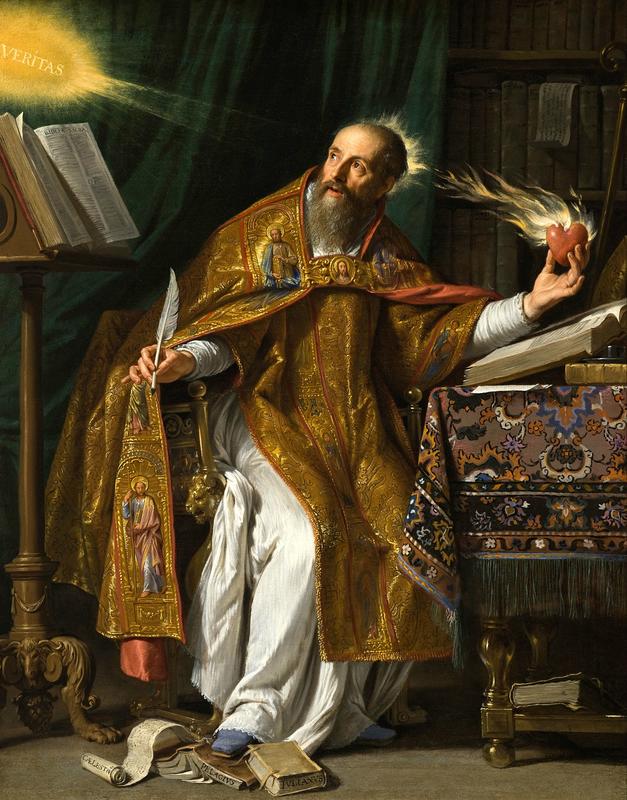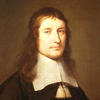More about Saint Augustine

Sr. Contributor
Saint Augustine is the patron saint of brewers because he spent his youth partying and binge drinking before his conversion.
Here we have sober, later life Augustine, unofficial patron saint of buzz kills. One of the most influential Christian figures of all time, Augustine is largely responsible for the doctrine of original sin (that all humans are sinful from the moment of conception, regardless of their actions)…said unbaptized babies everywhere, “Bummer, man.”
He did, however, have a convenient approach to the whole celibacy thing. At the height of his wild, sex-party days he prayed to God, “Grant me chastity and continence, but not yet.” In other words, let me have my whores and sainthood too. During this period he fathered at least three bastards. Since they didn’t have Viagra in the fourth century, renouncing sex when he reached middle age probably wasn’t that big of a sacrifice.
Augustine also distrusted literature. In this painting, we see him stepping on the First Amendment. Augustine seeks truth (“Veritas”) while crushing heretical, false texts under his foot. Notable among these is a volume by Pelagius. Pelagius was a British-born philosopher who asserted free will, and denounced predestination (the doctrine that God has already decided who will go to Heaven and Hell, and we can’t do anything about it). This radical idea that people could actually choose to do good or evil incurred the wrath of Augustine. Pelagius was declared a heretic and fled to Egypt, probably to avoid being burned at the steak.
Viewers will probably be struck by the flaming heart in Augustine’s left hand. This symbol, traditionally associated with Augustine, represents the burning thirst for truth, or the burning love of God. Knowing Augustine’s contempt for free intellectual expression, he’s probably about to use that heart to torch the pile of offending books. Those of you from California may more directly associate the image with the hoods of lowriders. However pious its significance, the flaming heart (so graphically rendered by Champaigne) gives an otherwise preachy painting an extra badass factor.
The painting has a mysterious provenance, but a likely theory identifies it as a piece once owned by the Prince de Conti. Conti was a French Prince of the Blood, renowned for his passion for war, women and art. After Madame de Pompadour engineered his exile from court, Conti amassed a collection so large and prestigious that the auction of his estate in 1777 skewed the art market for a decade. It was the last great art sale before the Revolution, and the excess of the collection was precisely the kind of extravagance that angered the hungry masses. So in a way, this painting had a part in causing the French Revolution.











